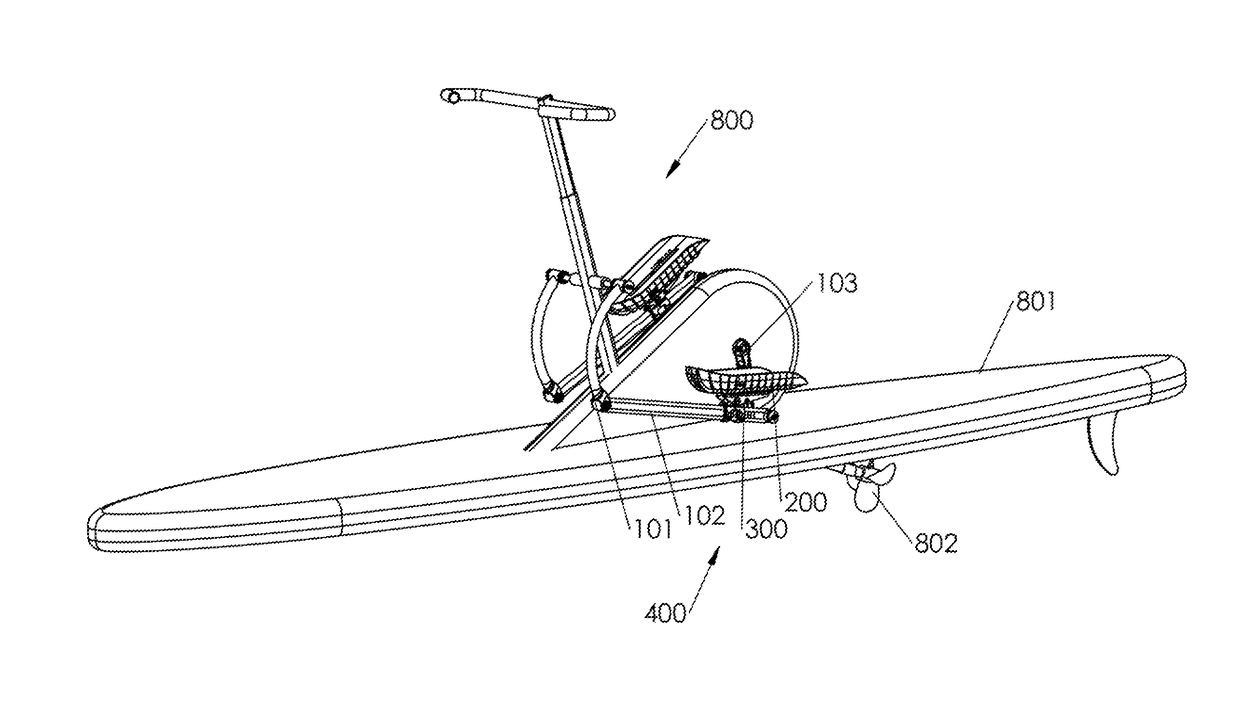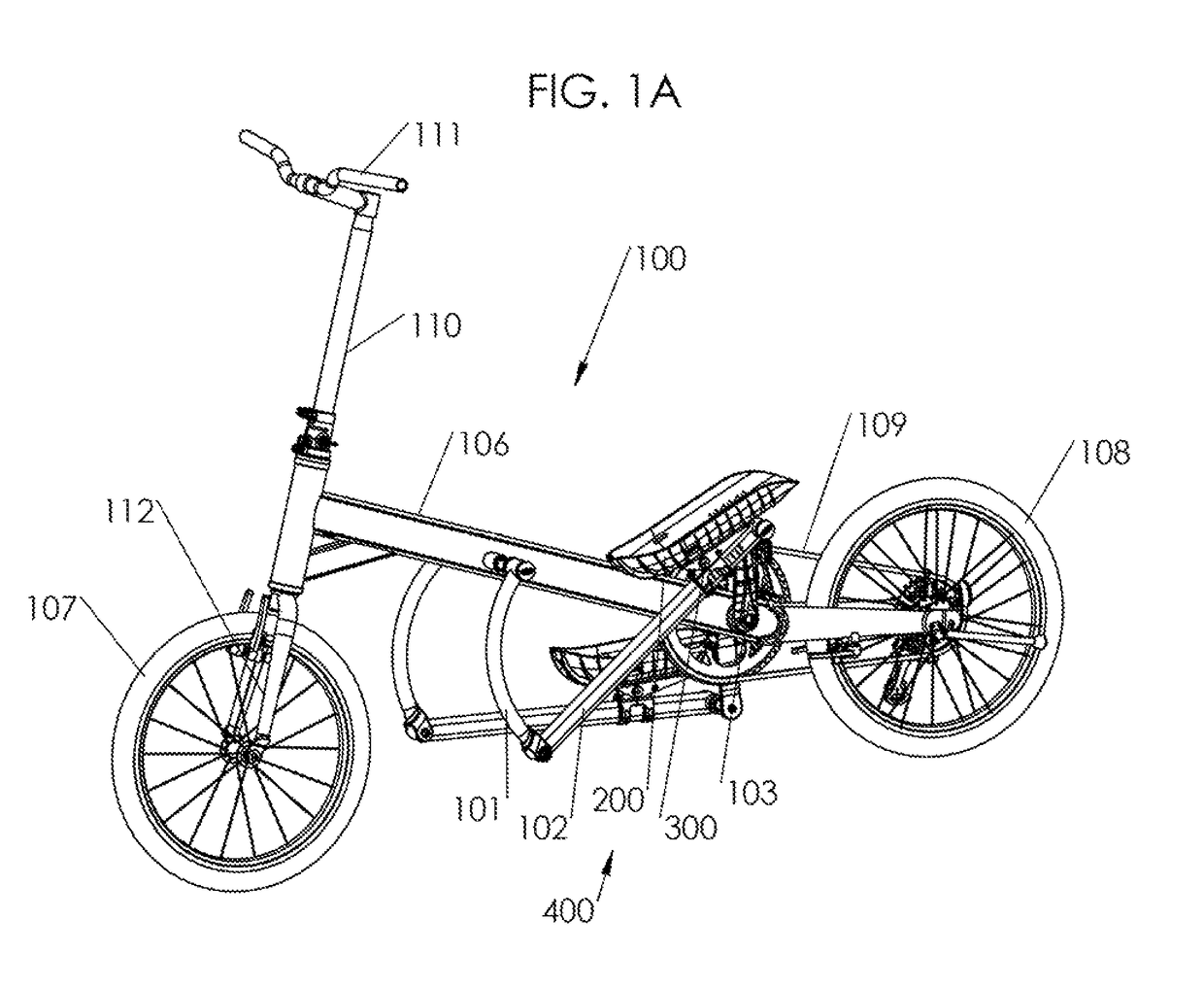Pivoting foot platform for elliptical apparatus
a technology of elliptical apparatus and platform, which is applied in the field of elliptical cycle foot platform, can solve the problems of limiting the range of viable foot platform angles, putting undue stress on the knee and ankle joints of the rider, and extreme foot platform angles that are uncomfortable for the rider, so as to reduce the overall length of the elliptical cycle frame and reduce weight and cos
- Summary
- Abstract
- Description
- Claims
- Application Information
AI Technical Summary
Benefits of technology
Problems solved by technology
Method used
Image
Examples
Embodiment Construction
[0055]With reference to FIG. 1A, an embodiment of a rear-drive elliptical cycle 100 with short drive arms and pivoting foot platforms is shown. Before describing the pivoting foot platforms, the elliptical cycle will first be described. In alternative embodiments, the pivoting foot platforms are applied to other types of elliptically-driven human powered vehicles including, without limitation, elliptical cycles with two, three, or four wheels; elliptical cycles with arm levers in place of the handlebars; and elliptically driven watercraft (FIG. 1D). In a further embodiment, the pivoting foot platforms are applied to a stationary elliptical exercise machine (FIG. 1C) for commercial use and / or home use.
[0056]The elliptical cycle 100 includes a drive mechanism 400 mounted on a frame 106 on which one or more wheels (front wheel 107, rear / drive wheel 108) are mounted. Generally, the drive mechanism 400 comprises either a slider crank mechanism or a rocker crank mechanism. A drive mechani...
PUM
 Login to View More
Login to View More Abstract
Description
Claims
Application Information
 Login to View More
Login to View More - R&D
- Intellectual Property
- Life Sciences
- Materials
- Tech Scout
- Unparalleled Data Quality
- Higher Quality Content
- 60% Fewer Hallucinations
Browse by: Latest US Patents, China's latest patents, Technical Efficacy Thesaurus, Application Domain, Technology Topic, Popular Technical Reports.
© 2025 PatSnap. All rights reserved.Legal|Privacy policy|Modern Slavery Act Transparency Statement|Sitemap|About US| Contact US: help@patsnap.com



